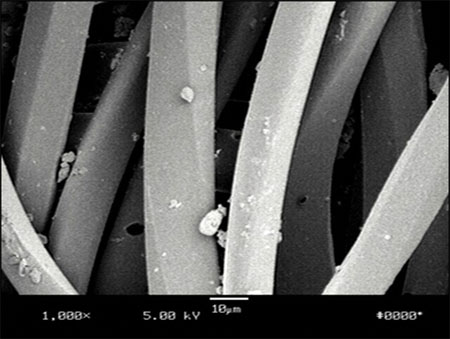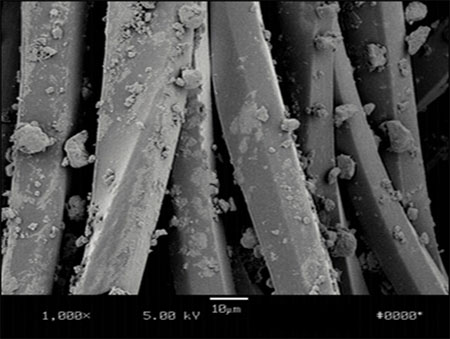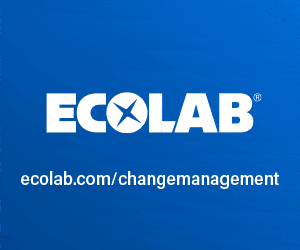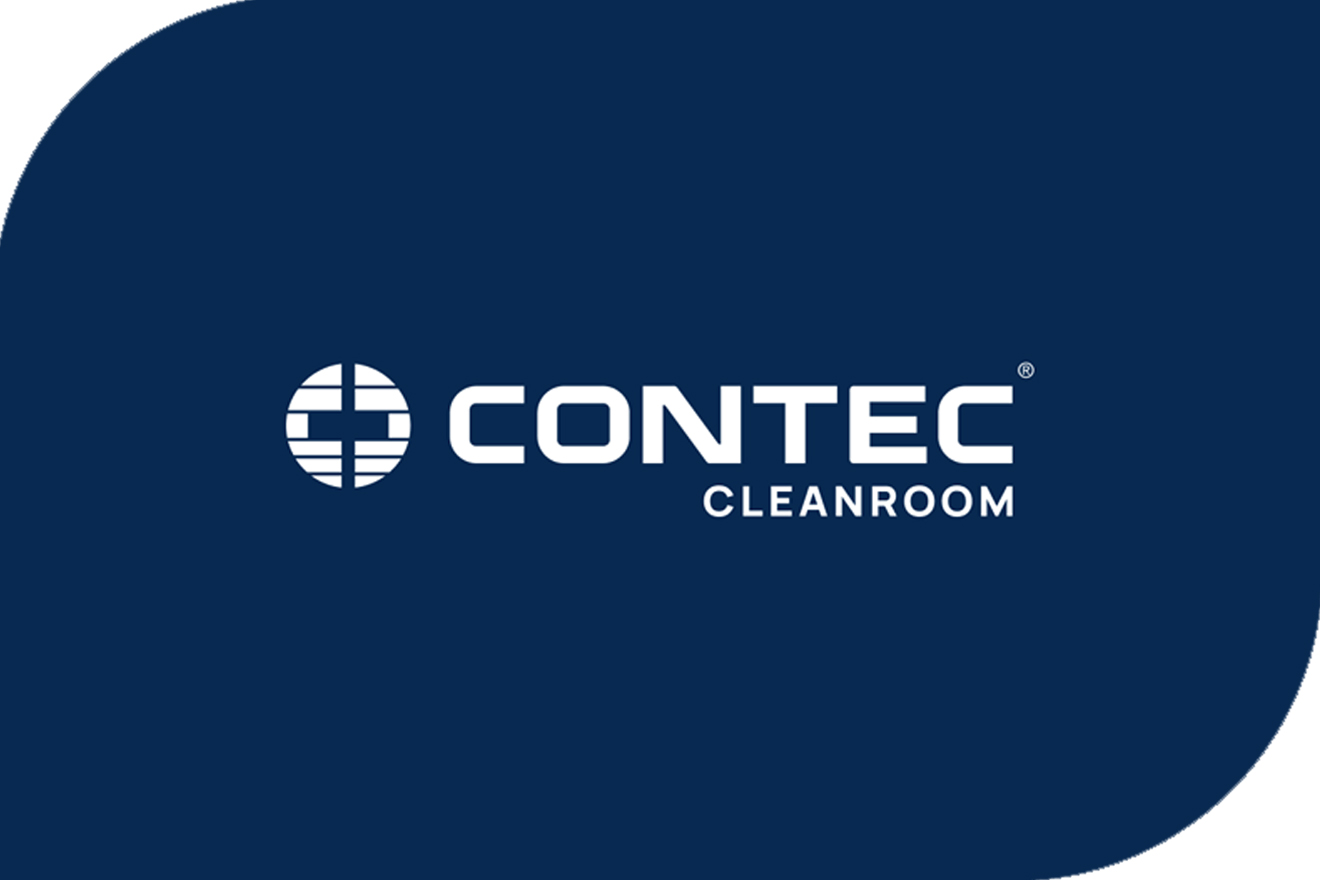Wipes are an essential cleaning tool for use in the pharmaceutical cleanroom. Karen Rossington, marketing consultant for Contec, looks at the wipe options and some recent performance studies.
Cleanrooms and other controlled environments require stringent control of particles, residues and micro-organisms to ensure desired product or process outcomes. The control of these critical parameters is very often achieved by the use of wipes, either dry or pre-saturated. Various studies have shown that wiping is a very effective way to control contamination on a hard surface. Initial work carried out by I F Stowers and H G Patton in 1978 looked at seven different surface cleaning techniques for removing contaminants from optical surfaces and concluded that wiping with a saturated lens tissue was the most effective particle removal process.1
Other methods of cleaning include dry wiping, compressed air blowing, vacuuming, tack rollers or irrigating with large volumes of solvent. Vacuuming may have a place for the removal of large, visible contamination and cleanroom vacuum cleaners with HEPA filtered exhausts are available. The use of compressed gas to blow particles may remove some particles but are they being physically removed from the cleanroom?
The use of large volumes of fluid to irrigate surfaces is ineffective and produces liquid containment and disposal issues. Further studies of cleaning methods for larger areas came to the same conclusion: damp wiping is the most effective cleaning method. Work carried out using a Dryden Q3 Surface Analyzer on pre-prepared plates with particles of known size showed the percentage reduction in particle contamination as illustrated in Figure 1.2
Presaturated wipes particularly are highly suitable for capturing and removing particles and dirt, disturbing biofilms and removing residues. The removal of particles is especially key, not only to pick up dirt and particles but also to trap them in the wipe and physically remove them from the cleanroom. The ability of a wipe to retain and remove a particle or fibre depends on the structure of the wipe and the size of the contaminant. Wetting the wipe significantly enhances particle entrapment and removal. In addition, some manufacturers have developed proprietary surface treatments applied to the dry wipes themselves to enhance particle removal and retention.
Particle Attraction Technology (PAT) enhances the ability of the wipe to attract and retain fine particles with diameters less than 10µm. This improves the wipe’s ability to clean surfaces, thereby leaving them cleaner. It is a permanent treatment that molecularly bonds to the fabric fibres and is enhanced in the presence of a solvent. It is most relevant in applications that are sensitive to fine particles (see Figure 2).

Figure 2a: Wipe without Particle Attraction Technology (PAT)

Figure 2b: Wipe with PAT shows the enhanced ability to attract and retain fine particles of dia <10µm
Studies of particle adhesion to surfaces have shown that the predominant force binding particles to a surface is a capillary force.3 The use of a wipe presaturated with a low surface tension fluid, such as alcohol, helps to lower the surface tension of this binding force, facilitating the removal of the particle.
Wetting a wipe further enhances its ability to trap particles. Using a wetted wiper provides an overpowering bias for the particles to remain with the wipe, as the capillary hydroscopic forces from the moisture on the wipe provide the mechanism for the particles removed from the surface to remain with the wipe. Once the wipe is removed from the environment, the particles go with it, resulting in the most effective method for removing particles from a cleanroom surface.
The amount of fluid used to pre-wet the wipe is critical: if the wipe is over-saturated then particles are re-deposited on the surface and simply moved around, rather than picked up into the wipe.4
presat or dry?
A further question that needs to be answered is whether it is more efficient to use a wipe that has been pre-wetted or a dry wipe that is wetted at point of use from a squirt bottle, aerosol or trigger spray. (Manufacturers will use the terms presaturated, pre-wetted or pre-impregnated: all refer to a wipe that is purchased already wet with a solvent or disinfectant, usually in a pouch or tub that can be resealed.)
Presaturated wipes can offer many benefits over bottled IPA and dry wipes for cleanroom use. Presats were first introduced to cleanrooms at IBM in 1988 by Contec to reduce solvent utilisation and increase convenience in hand wiping. Because they provide exceptional solvent control, presaturated wipes were soon adopted by the aerospace, semiconductor, automotive and other industries to meet increasingly stringent VOC emission and solvent reduction regulations. However, one of the quickest adopters of these products was the medical device industry, which saw the productivity improvements and process controls the technology offered. Sterile presats for the pharmaceutical industry were introduced in 1990 and are now one of the fasting growing consumable products used in pharmaceutical cleanrooms due to the benefits they provide.
Sterile presats for the pharmaceutical industry were introduced in 1990 and are now one of the fasting growing consumable products used in pharmaceutical cleanrooms due to the benefits they provide
Based on feedback from end users in multiple industries, a comparison of common methods of applying cleaning solutions showed that solvent usage can be reduced by between 15 and 50% by using presaturated wipes. This has been a significant benefit to companies looking to manage solvent usage and emissions while retaining familiar work practices that involve hand wiping.
The majority of pharmaceutical and healthcare cleanrooms use 70% alcohol solutions for transfer disinfection as it is fast-acting and leaves no residue. For instance, if IPA is the alcohol of choice, it has a low work exposure limit (UK TWA 400ppm 8 hours) and this limit can be very easily breached when spraying for long periods of time during transfer disinfection. The use of presaturated wipes can eliminate the need for costly remedial work to install ventilated transfer hatches.
In all cleanrooms there is a need for repeatable and validated processes. The spraying of a dry wipe with a solvent to a predefined saturation level is not a repeatable process. Each operator has a different view on when a wipe feels wet. Add to this that the operator is probably wearing two pairs of gloves or is in isolator gauntlets and the tendency is to over-wet the wipe as the operator cannot actually ‘feel’ how saturated (or not) the wipe is. Even the same operator on different days probably does not saturate a dry wipe in the same way.
The spraying of a dry wipe with a solvent to a predefined saturation level is not a repeatable process
This can pose a particular problem in the case of disinfection, where the objective is to leave a visible film of disinfectant on a surface for a defined contact time. The wipe needs to be saturated enough to leave behind sufficient disinfectant but not be so wet that the benefits of controlled application of the fluid are lost. Also the validated process of disinfection relies on the correct amount of disinfectant being applied by each operator to get the expected log reduction in micro-organisms. If insufficient disinfectant is applied the disinfectant may dry before the validated contact time is reached.
In the case of cleaning, the saturation levels are even more crucial. In a ground-breaking study by Mattina, et al,5 five different commonly used wipes were saturated at various volume levels above and below the full saturation limit of the wipe. The type of wipe tested included: nonwoven polyester/cellulose, nonwoven polyester, melt blown polypropylene and both knife cut and sealed edge polyester. The performance of the wipes in cleaning a common surface was then compared by measuring the contaminants remaining on the surface after each wiping.
The results clearly indicated that a wipe saturated beyond its ability to hold solution left a surface with more contaminants than with any other level of saturation. Indeed, saturation levels below the saturation limit (i.e. a less wetted wipe) consistently resulted in fewer particulate contaminants remaining on the wiped surface. It is thought that the particles from the wiped surface and the wipe itself, are distributed through the solution on the wipe. A wipe with excess solution will leave some solution behind on the wiped surface and with it any contamination within the solution.
A wipe saturated beyond its ability to hold solution left a surface with more contaminants than with any other level of saturation
Having a validated cleaning process requires documentation of both the process and the products used in the process. The use of a presaturated wipe reduces time and costs as only one product, the presaturated wipe, needs to be qualified and validated as opposed to two products – the wipe and the spray.
Using presaturated wipes simplifies the writing of the SOPs as the process of validating the spraying of the wipe is removed. This saves time but, more importantly, provides a process that is more easily audited by internal and external agencies.
disinfection capability
Another more recent study also came to a ground-breaking conclusion. A study published in The Society for Applied Micro-biology, Letters in Applied Microbiology 6 compared the spread of microbial contamination on surfaces cleaned with dry wipes that were sprayed with alcohol with those cleaned with presaturated wipes.
This independent study concluded that wiping with presaturated wipes minimised the spread of contamination: ‘The dry wipes sprayed with alcohol demonstrated minimal effect at reducing the bacterial bioburden on a surface and were able to transfer viable micro-organisms between surfaces… However, the continuous transfer of bacteria following the use of the dry wipes sprayed with alcohol is of concern. …our results clearly demonstrated, in a quantitative manner, that alcohol pre-impregnated wipes are more effective at reducing surface bioburden than dry wipes sprayed with alcohol.’
It is also worth noting that not all wipes are compatible with all disinfectants. Hypochlorite solutions are very adversely affected by organic materials such as cellulose, rendering the microbial efficacy negligible to non-existent.7 With a presaturated wipe this potential incompatibility will have been tested and verified or eliminated by the manufacturer.
Damp wiping to a validated procedure is a proven method of effective surface cleaning versus other techniques
In conclusion, in many types of cleanroom wiping of surfaces and equipment by hand is still an integral part of the manufacturing process. Cleaning and disinfection in a pharmaceutical cleanroom is a critical process to protect patient safety and product quality. More effective and consistent hand cleaning and disinfection will result in greater consistency, quality and safety in the overall process and the resulting product.
Damp wiping to a validated procedure is a proven method of effective surface cleaning versus other techniques. The use of presaturated wipes brings additional benefits in improved productivity, reduced validation, increased process control and repeatability, improved safety and VOC reduction. For life science cleanrooms the use of alcohol presaturated wipes versus wipes wetted at point of use is even more beneficial as it has been proven that they are more effective at reducing surface bioburden.
references
1. I F Stowers and H G Patton, Techniques for removing contaminants from optical surfaces: Preprint UCRL-80730 Lawrence Livermore Laboratory 1978
2. D Nobile, Cleaning Effectiveness Method Comparison: Contec Presentation 2006
3. K Mittal, Surface Contamination, Plenum Press 1979
4. H Siegerman, Wiping Surfaces Clean, Vicon Publishing 2004
5. C F Mattina, McBride, D Nobile, The cleanliness of wiped surfaces: particles left behind as a function of wiper and volume of solvent used. Cleanroom East Proceedings 1996
6. M N Panousi, G J Williams, S Girdlestone, S J Hiom and J-Y Maillard (2009) Evaluation of alcohol wipes used during aseptic manufacturing, The Society for Applied Microbiology, Letters in Applied Microbiology 48 648–651
7. J Schultz, Minncare Corp, Wiper material effect on germicidal efficacy of disinfectant solutions, Advances in Disinfectant Technologies 1:1–2 2009
The author would like to acknowledge the input of Jack McBride and Dave Nobile of Contec Inc in the compiling of this article.





